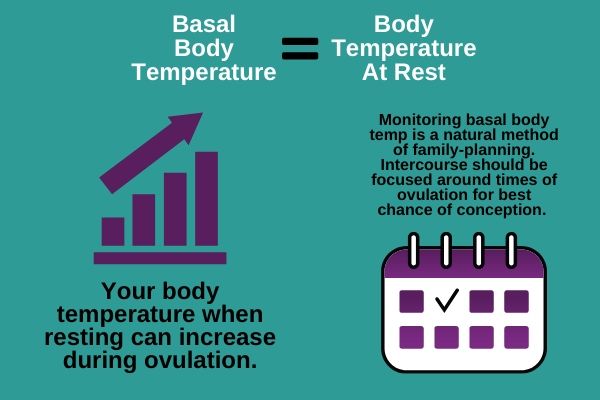
If you have uterine fibroids, you may be concerned about your ability to get pregnant. While research suggests fertility can be affected by the presence of fibroids, their size and location play a major role in whether this actually occurs. While most women with fibroids can get pregnant and deliver a healthy baby, certain fibroid treatments –– such as myomectomy and hysterectomy –– can impact fertility or cause permanent sterility.
If fibroids are affecting your ability to get pregnant, there are a variety of ways to improve your chances of becoming a mother. For example, following a healthy lifestyle that includes eating a nutritious diet, getting enough sleep, and exercising regularly may be helpful. However, understanding your individual fertility cycle is often key when it comes to getting pregnant.
One way to get your timing right is by tracking your Basal Body Temperature (BBT). This daily measurement can help determine if and when you are ovulating. Increasing your fertility awareness will allow you to find the best days to have intercourse to maximize your odds of getting pregnant. Here’s everything you need to know about fibroids, fertility, and BBT.
Conceiving with Uterine Fibroids
Fibroids and Fertility
Uterine fibroids –– noncancerous tumors located in or on the uterus –– are common during the reproductive years, affecting up to 80% of women by age 50. Although many women don’t experience any adverse effects, others may suffer from painful, uncomfortable, and inconvenient symptoms like pelvic pain, heavy periods, painful sex, and frequent urination. For some, fertility can be affected. Research demonstrates that 5-10% of infertile women have fibroids.
The size and location of fibroids determine whether fertility is affected. Submucosal fibroids are the least common type of fibroids (5%), but are also the most likely to impact fertility. This type forms underneath the uterine lining and can protrude into the uterine cavity. Very large intramural fibroids (over 6cm) can also impact fertility. These develop within the muscular walls of the uterus. Intramural fibroids are more likely to go unnoticed if they are smaller in size.
There are a variety of potential ways that fibroids can impact fertility. First of all, fibroids can change the shape of the uterus, affecting both the number of sperm entering it and their movement. Or, fibroids can grow to block the Fallopian tubes. Fibroids can also reduce the size of the uterine cavity lining and, for some, affect blood flow to the uterus.
Once pregnant, most women don’t experience any related complications. However, research indicates that 10-30% develop complications due to fibroids. These can include pain (most common), vaginal bleeding, spontaneous miscarriage, preterm labor, placental abruption, cesarean delivery, and postpartum hemorrhage.
Beyond these potential complications, fibroids tend to grow during pregnancy due to an influx of extra hormones. This can result in the development or worsening of fibroid symptoms. After pregnancy, fibroids tend to shrink.

Basal Body Temperature and Fertility
When it comes to getting pregnant, tracking your Basal Body Temperature (BBT) may help. BBT refers to your lowest body temperature of the day, taken at rest. This measurement is affected by your monthly hormones. An increase in hormones causes a slight increase in BBT.
If you’re wondering how this might help you get pregnant, it’s pretty simple. A rise in BBT indicates that ovulation occurred. Because fertility is at its highest during ovulation, you are most likely to get pregnant one to two days before your BBT rises. Tracking your BBT over time can help you determine the days when you are most fertile.
Obtaining accurate BBT measurements involves a special thermometer designed to track small changes. Use one to take your temperature each morning at around the same time, immediately following wake-up and before getting out of bed. Then, track this information on a BBT app or other type of BBT chart to determine ovulation patterns in your cycle throughout the month. Some BBT thermometers are even Bluetooth-enabled, making this task a breeze.
If you do not get pregnant during your cycle, your BBT will soon drop to pre-ovulation levels. On the other hand, your basal body temperature when pregnant will remain elevated. Gaining a better understanding of basal body temperature, ovulation, and your overall cycle can help anyone struggling with fertility –– including women with fibroids.
Fibroid Treatment
If you are considering fibroid treatment, we want you to know that you have options. If you’ve been told that hysterectomy is the only available method, this simply isn’t true. There are some special considerations to take into account for women of reproductive age. First of all, treatment timing is a factor. If you are pregnant or actively trying to become pregnant, you are not a candidate for fibroid treatment.
If you are not pregnant, but planning on having children in the future, you’ll probably want to avoid a hysterectomy –– the complete surgical removal of the uterus –– as well as other surgeries that don’t leave your uterus, ovaries, and Fallopian tubes fully intact.
At USA Fibroid Centers, we offer an effective, nonsurgical treatment that can eliminate your symptoms while allowing you to retain your fertility. Uterine Fibroid Embolization (UFE) is considered the gold standard in fibroid treatment and does not involve a hospital stay or lengthy recovery. To get started on the path towards your future, please contact us today to schedule an initial consultation.



